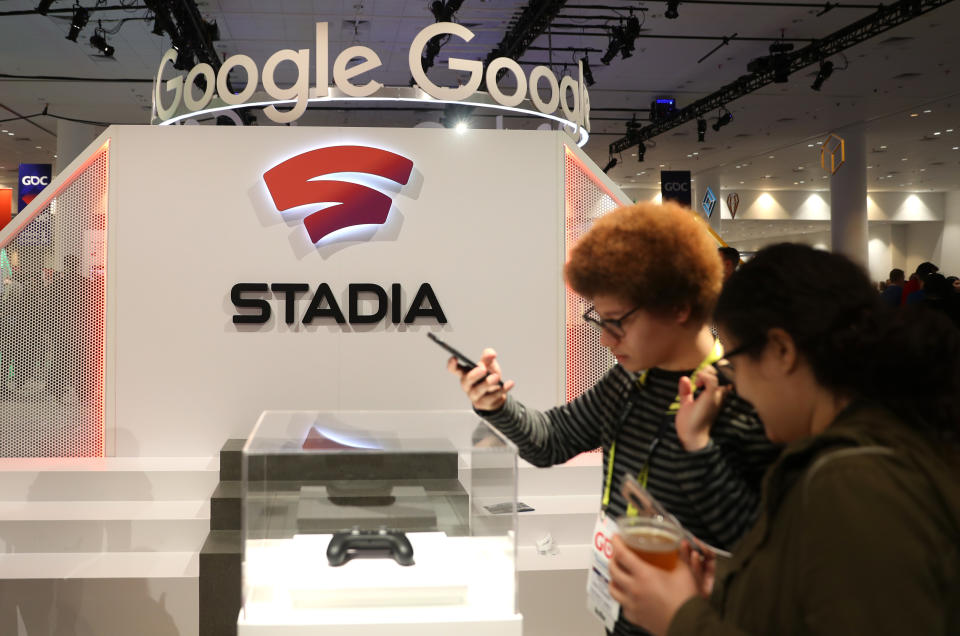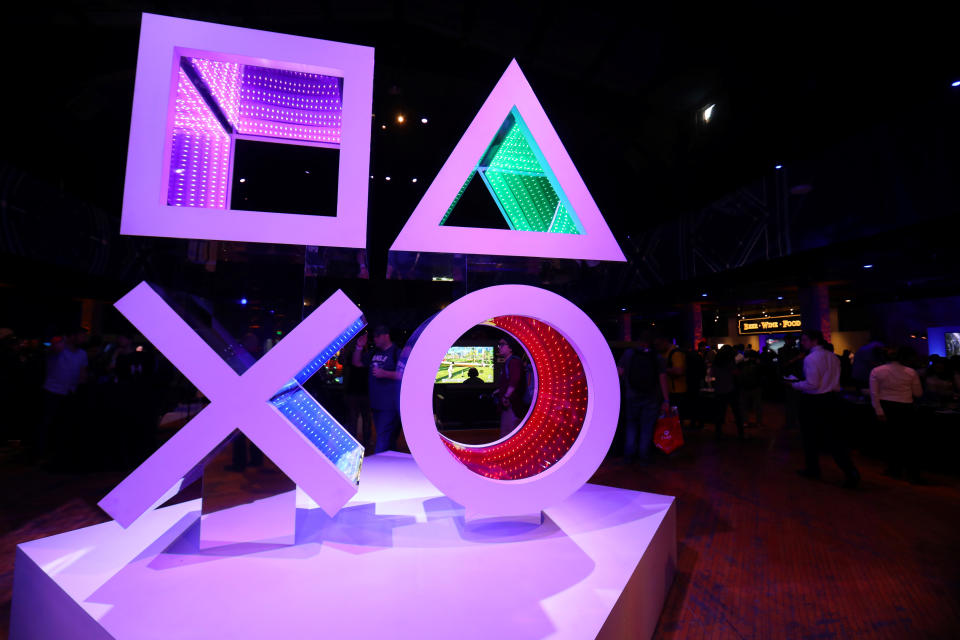E3 2019: Here's when we'll get a Netflix for video games
E3 2019 is in the books. And while the convention brought plenty of new video game announcements and updates to salivate over for the next few months, it also left plenty of questions — particularly when it comes to cloud gaming.
Ahead of E3, cloud gaming seemed to be all anyone who follows the industry could talk about. That made sense considering that cloud gaming—being able to stream games to devices ranging from smartphones and tablets to years-old laptops and smart TVs without a pricey console or PC—is the Holy Grail of gaming.
Cloud gaming has the potential to let users stream system-intensive video games, the kind you'd normally need a pricey console or PC for, to virtually any device with a screen. We're talking smartphones, tablets, laptops, and smart TVs. You'd even be able to start a game on one device, like your home TV, and pick it up on your phone right where you left off.
The technology could bring gaming to a whole new population, and expand the medium's reach, and line the pockets of its biggest businesses.
But after the big show, things are looking a little, well, cloudier. Microsoft didn't spend nearly as much time as it was expected to in discussing Project xCloud, and Sony didn't even show up. That's why we're breaking down where each of the major game companies stand when it comes to gaming in the cloud.
Google Stadia
Google (GOOG, GOOGL) began testing its game streaming service back in 2018 when it offered a beta that let users stream Ubisoft's "Assassin's Creed Odyssey" to their devices via Google's Chrome web browser.
Then on June 6, just ahead of E3, the company dropped some more important details about its service. Namely that it will cost $9.99 per month, and run on Android smartphones and tablets, Chromebooks, and the company's Chromecast TV streaming device.

That $9.99 per-month-price will give you access to a handful of free games, and let you purchase your own games to play. A $129 Founder's Edition of Stadia will get you three months of Stadia Pro and 3 months for you to gift to a friend via a Buddy Pass, a Stadia controller, and a Chromecast Ultra to play on your TV.
While the Pro version of Stadia will launch in November, a free version will eventually hit the market in 2020. That, however, will limit image resolutions for games to 1080p versus the 4K you can get with the Pro edition. The free version will also lack the regular game giveaways that will come with the Pro edition.
Google's got the technical chops to pull off a game streaming service, thanks to its massive data centers spread out across the U.S. That's important for users since the farther away you live from a data center, the greater chance there is for you to run into lag while playing — which would make games unplayable.
Of all of the major streaming options out there, Stadia is the closest to a full consumer launch, and has the potential to be a hit. But Google will need to convince gamers that its service is worth a monthly fee. And so far, the company hasn't showed off any truly impressive offerings outside of games that are either already available for, or coming to, traditional consoles.
Microsoft Project xCloud
Outside of Google, Microsoft (MSFT) is the only other major player in the game streaming space that is fully equipped to blast games into consumers’ eyeballs on any device they own. The company announced Project xCloud back in 2018, and provided a brief update for the service in March, as well as a blink-and-you-missed-it mention at E3.

While Google is ready to hit the big-time out of the gate with Stadia running on smartphones, laptops, and TVs, Microsoft's xCloud is sticking with streaming to smartphones and tablets at the moment. The company will expand to other devices over time, but it looks like Microsoft is more focused on getting the technology right first.
It's also important to point out that Microsoft isn't only focusing on a streaming service: The company announced its next-generation game console, Project Scarlett, at E3. That system will play games at resolutions as high as 8K at 120 frames per second. Microsoft is clearly readying its service, but is working at a slower pace with the understanding that consoles will still be an important part of the gaming landscape for at least the next few years.
Sony game streaming
Sony's (SNE) future plans for streaming games are still very much up in the air. There's been no word on how developed the service is, when it might be available, how much it will cost, or even what it will be called. What we do know, however, is that the company is teaming up with its biggest rival, Microsoft, in developing the technology for its future offering.

In May, Sony and Microsoft announced a strategic partnership that would use Microsoft's Azure to support their respective streaming services. But Sony skipped E3 this year, which left us with questions about its cloud service. The company has already confirmed that it will release a next-generation console to rival Microsoft's Project Scarlett, though, so it's obviously not abandoning traditional systems.
Sony already has a streaming service of its own called PlayStation Now, though it only lets users stream games from previous console generations including the PlayStation 2, PlayStation 3, and PlayStation 4. The service, which is available for $69 per year for the first year, is also only available through the PlayStation 4 console and PC.
We'll likely continue to hear more about Sony's streaming plans in the year ahead.
Nvidia GeForce Now
Graphics card maker Nvidia (NVDA) is also a player in the streaming games business with its GeForce Now service. Available via invite only, GeForce Now is currently a free beta that lets you stream hundreds of games from your own collection to your PC, Mac, or Nvidia Shield TV streaming box.

Nvidia's offering has been in beta for quite some time, and the company still hasn't announced when it will come out of beta or how much it will cost when it does. It's unlikely it will be able to compete with the likes of Google and Microsoft in terms of cloud capacity. However, since the company has been testing its systems for so long, it may be the most experienced in the streaming business.
Other players
There are a number of secondary players in the game streaming industry including the likes of Shadow's Blade, which lets you stream to your mobile device and laptop or desktop, and Playkey, which works with PCs and Macs. Amazon (AMZN) is also said to be working on its own game streaming service, and like Google and Microsoft, the company has the kind of network backbone that can ensure gamers get the best experience.
For now, Google looks set to be the leader in the streaming space, but that could change over time as more services come on line. There are also still headwinds facing the streaming industry, chief among them the fact that many gamers' internet connections are too slow stream gamers properly.
More from Dan:
Email Daniel Howley at dhowley@yahoofinance.com; follow him on Twitter at @DanielHowley.
Follow Yahoo Finance on Twitter, Facebook, Instagram, Flipboard, SmartNews, LinkedIn,YouTube, and reddit.

 Yahoo Finance
Yahoo Finance 
